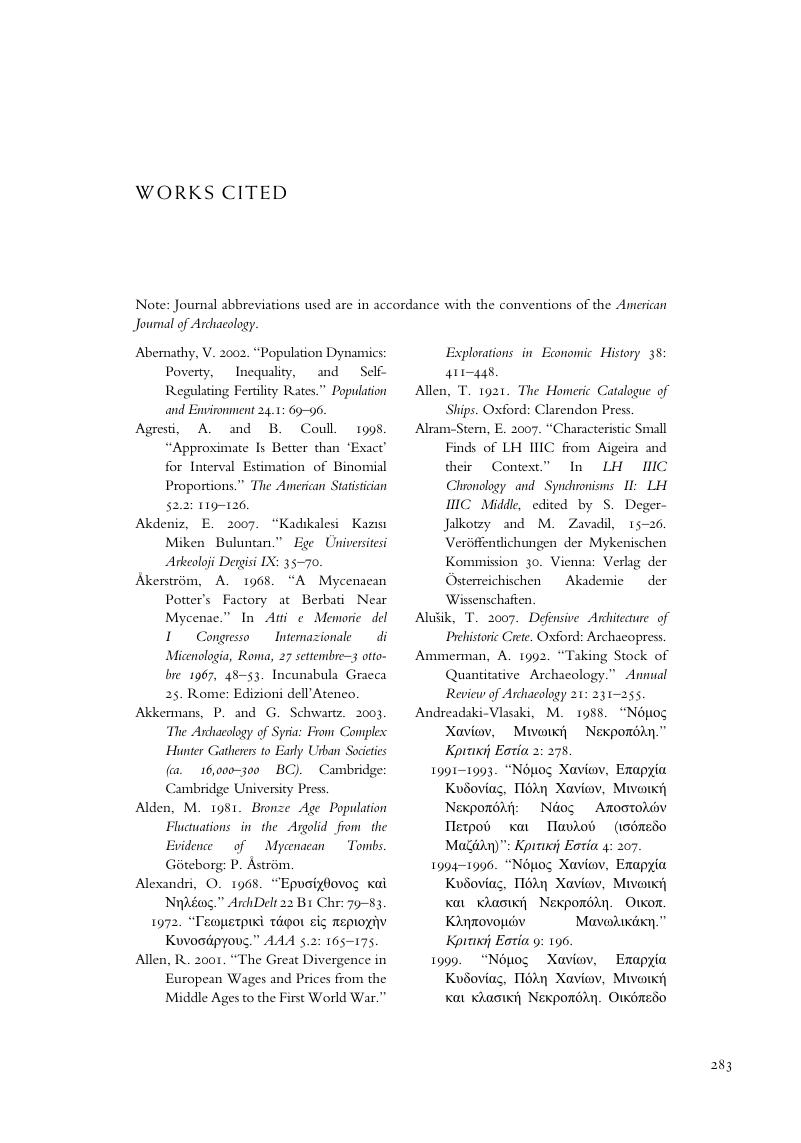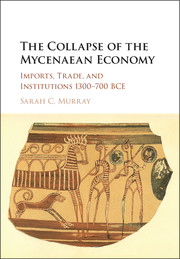Book contents
- The Collapse of the Mycenaean Economy
- The Collapse of the Mycenaean Economy
- Copyright page
- Dedication
- Contents
- Figures, Maps, and Tables
- Preface
- Acknowledgments
- Introduction
- One The Dark Light of Early Greek Texts on Trade
- Two Direct Evidence for Long-Distance Trade in Early Greece
- Three Assessing Quantitative Change in the Archaeological Record
- Four Bronze Deposition (and Circulation?), Trade in Commodities, and Evidence from around the Mediterranean
- Five Demographic and Domestic Economic Change in Early Greece: Factors of Supply and Demand
- Six Snapshots of a Trade System in Flux
- Conclusions Imports and Economy, Crisis and Resilience, Bronze Age and Iron Age
- Works Cited
- Index
- References
Works Cited
Published online by Cambridge University Press: 12 May 2017
- The Collapse of the Mycenaean Economy
- The Collapse of the Mycenaean Economy
- Copyright page
- Dedication
- Contents
- Figures, Maps, and Tables
- Preface
- Acknowledgments
- Introduction
- One The Dark Light of Early Greek Texts on Trade
- Two Direct Evidence for Long-Distance Trade in Early Greece
- Three Assessing Quantitative Change in the Archaeological Record
- Four Bronze Deposition (and Circulation?), Trade in Commodities, and Evidence from around the Mediterranean
- Five Demographic and Domestic Economic Change in Early Greece: Factors of Supply and Demand
- Six Snapshots of a Trade System in Flux
- Conclusions Imports and Economy, Crisis and Resilience, Bronze Age and Iron Age
- Works Cited
- Index
- References
Summary

- Type
- Chapter
- Information
- The Collapse of the Mycenaean EconomyImports, Trade, and Institutions 1300–700 BCE, pp. 283 - 344Publisher: Cambridge University PressPrint publication year: 2017



